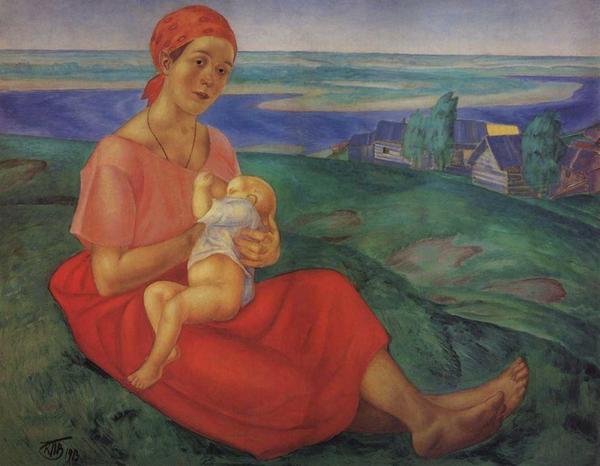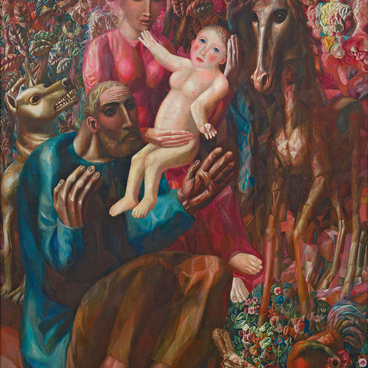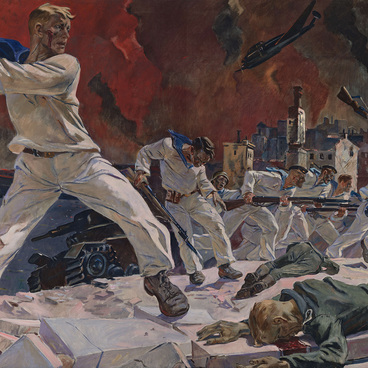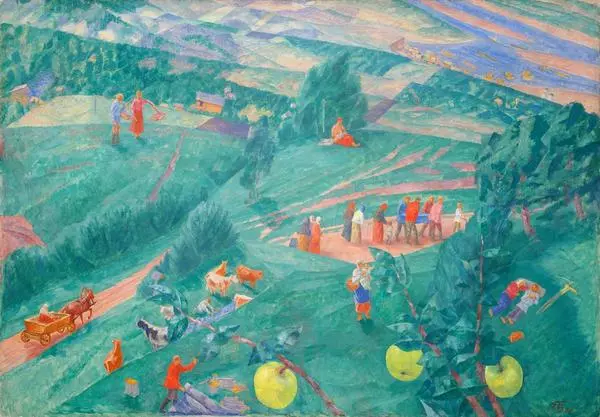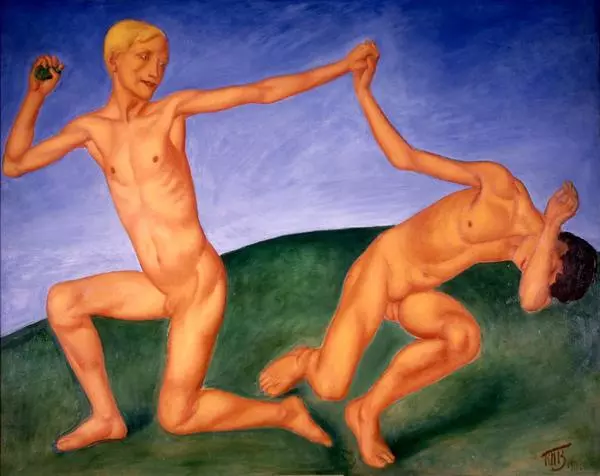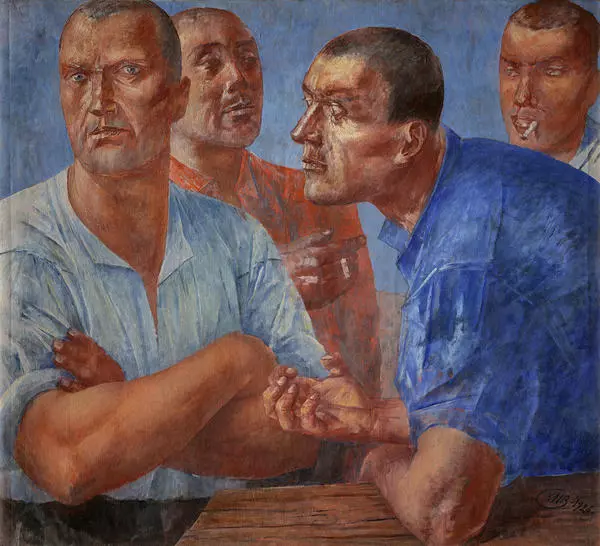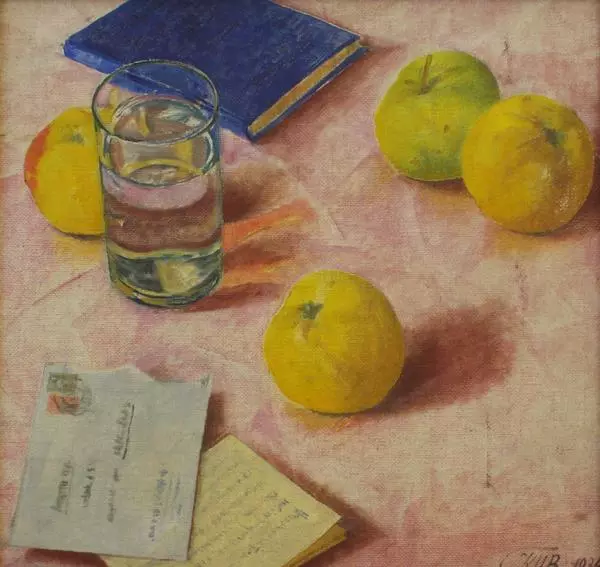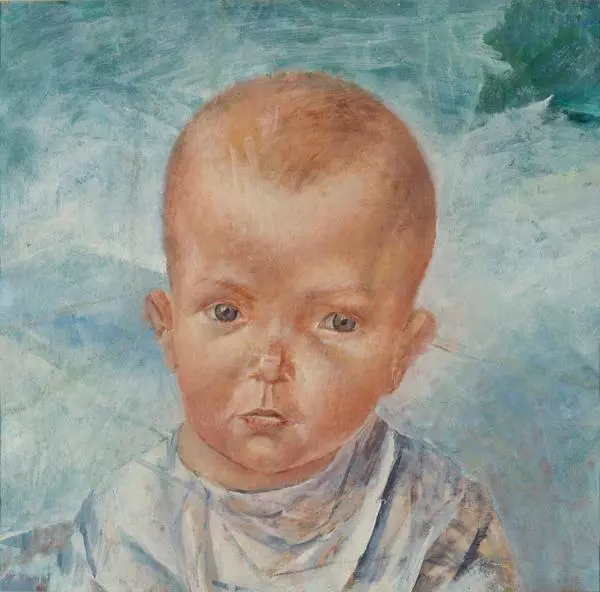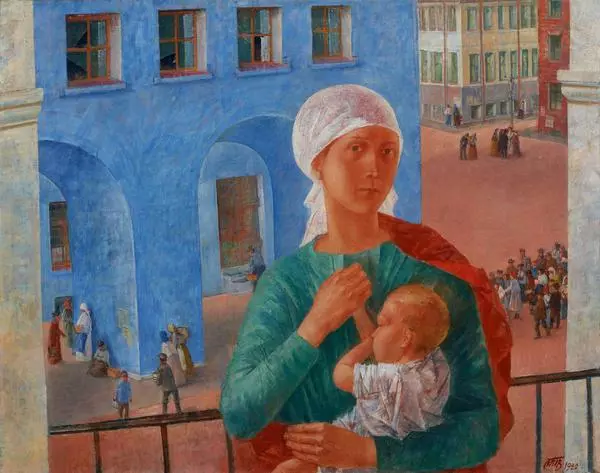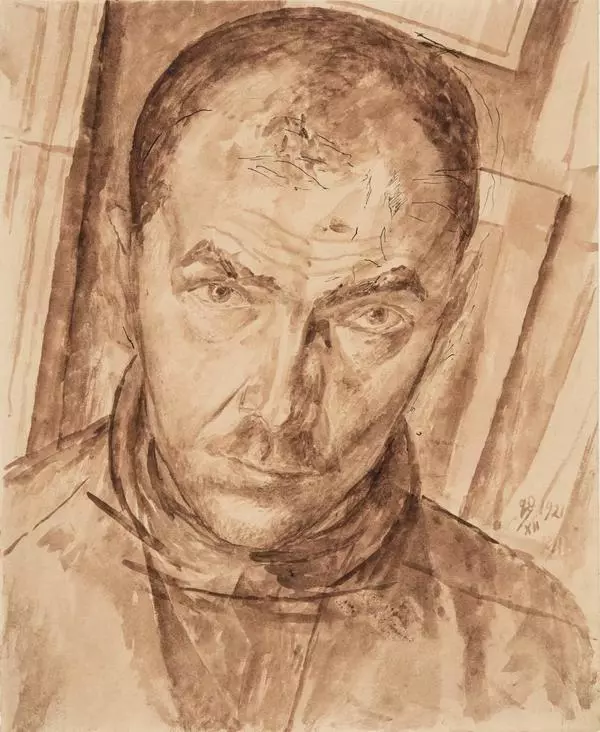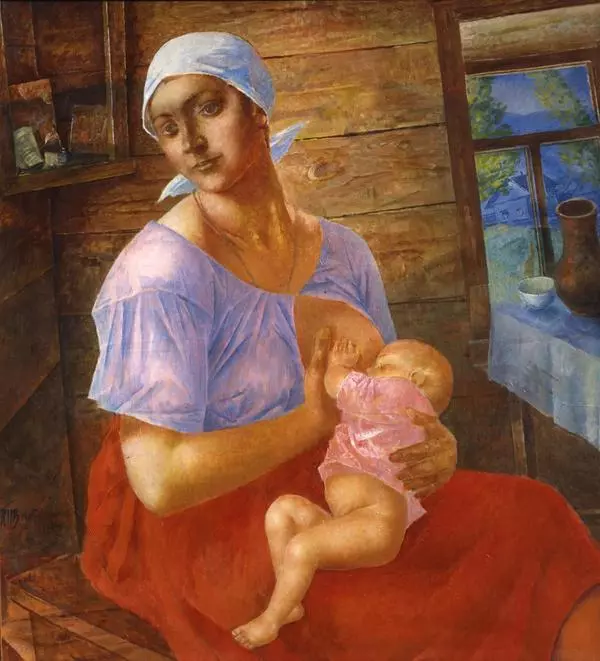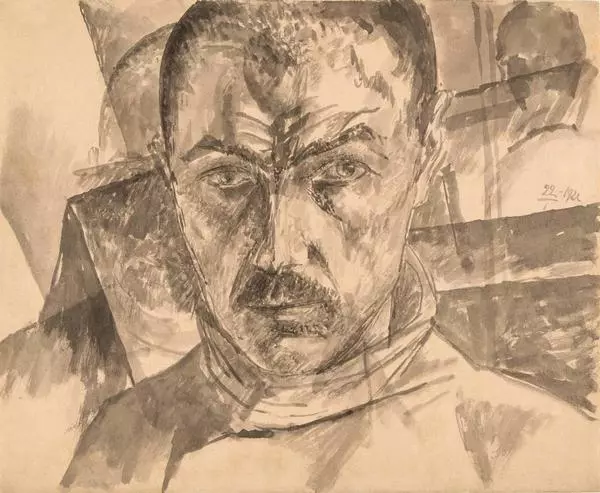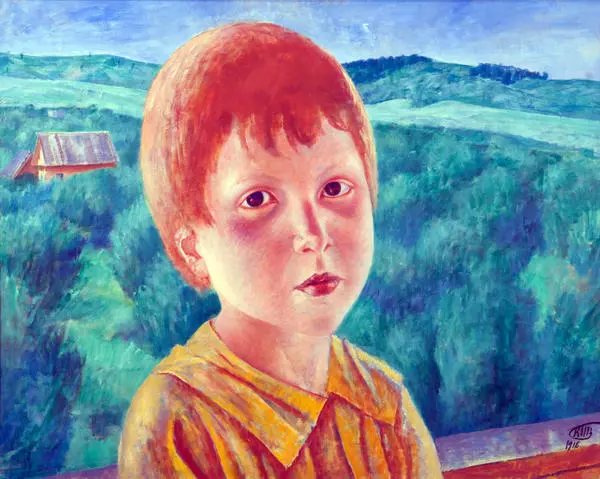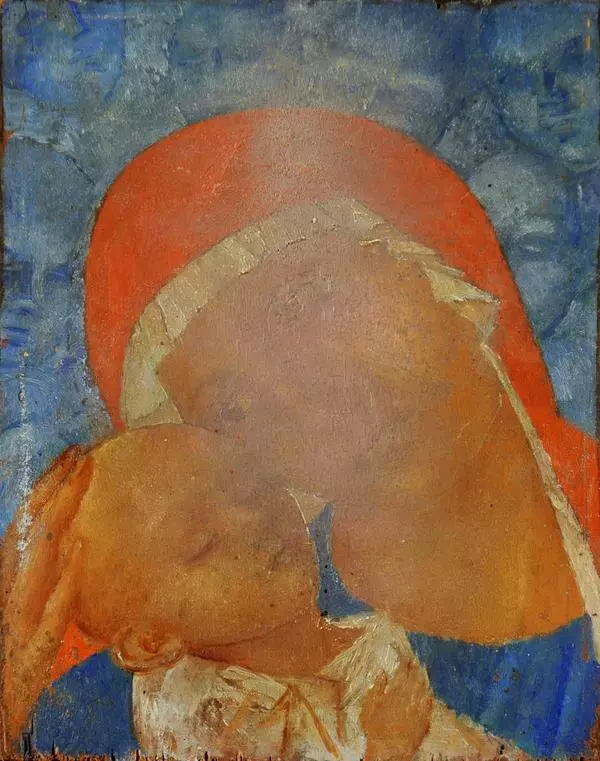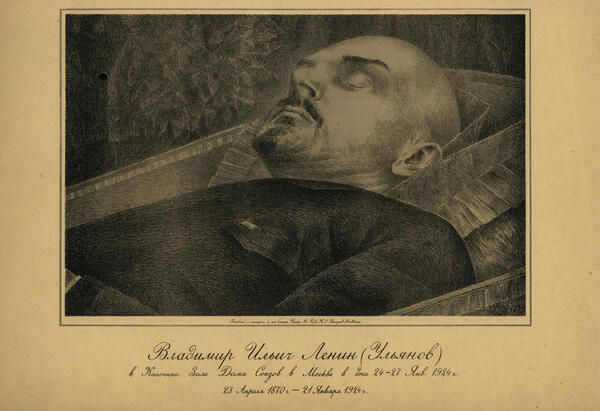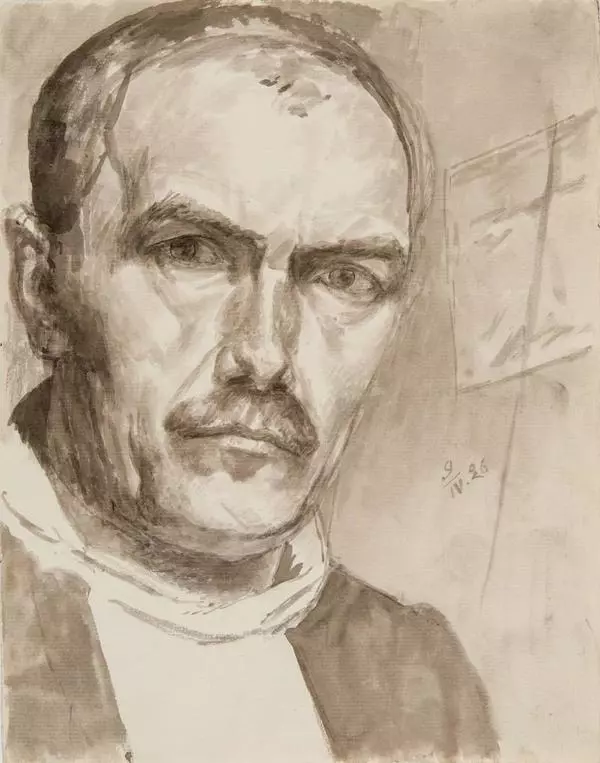Kuzma Petrov-Vodkin, a Russian and Soviet painter and graphic artist, a prominent representative of avant-garde. His creative activity is imbued with different trends and even epochs, from Russian icon-painting to Italian renaissance and French post-impressionism. His life was as unusual — from the son of a shoe-maker to a world-known painter.
#3
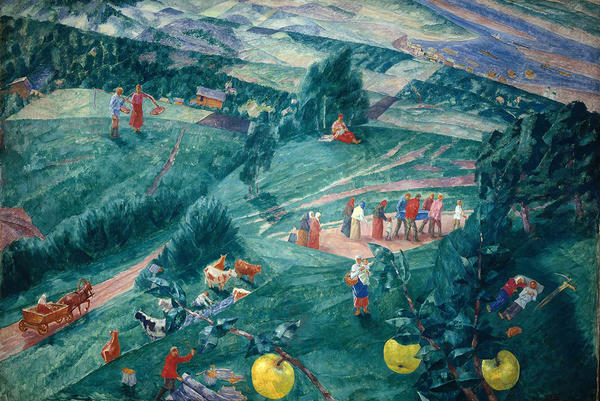
Petrov-Vodkin K.S.
Midday
#2
#4
Back in his school years in the Saratov Guberniya, Kuzma tried his hand at painting icons at the workshop of some icon painters he knew, drew shop signs to make some money. By a lucky chance, he found himself at the Baron Stiglitz School of Technical Drawing in St. Petersburg. Later, he became a student of Valentin Serov, a master of academic portrait, at the Moscow School of Painting, Sculpture and Architecture.
#5
Petrov-Vodkin also studied abroad, travelled a lot in Europe, visited Northern Africa. By the time of painting the ‘Midday. Summer’, a few of his works had already made him famous both in Russia and abroad. His contemporaries had very different opinions about his works — realists, including Iliya Repin, bluntly criticised them, others admired them.
The lyrical summer landscape was painted by the artist in the revolutionary year of 1917 which became a crunch point for both Russia and Russian painting. After 1917, Petrov-Vodkin worked for proletarian art — he drew posters, illustrated magazines. He became professor at a new arts school which replaced the eliminated Academy of Arts.
#6
The ‘Midday. Summer’ is a Russian peasant’s whole life put on canvas. The artist reflected the main stages of a person’s life. Women with children are for birth and motherhood, a lad and a girl — for love, a funeral procession — for death. The other characters are working — gathering the crops, chopping wood, milking the cattle, and taking a rest after hard work.
#7
The ‘Midday’ represents Petrov-Vodkin’s special creative technique part of which was the principle of three colours. The artist believed that blue, yellow, and red were the main colours, and the rest of colours were derivatives. Combinations of the tones of those three main colours made it possible for him to create strong and pure harmonies.
#8
The artist widely used this principle in his works dedicated to motherhood. By the way, a woman in a red skirt breast-feeding her baby under a tree is almost a replica of the 1913 painting. The artist, like a camera man, changes a close view for a distant view to show people’s life bubbling around the mother.
Kuzma Petrov-Vodkin. Mother. Oil on canvas. 1913. The State Tretyakov Gallery
#9
Another specific feature of the painter’s brush is spherical perspective. Unlike conventional linear perspective, this type of perspective simultaneously presents the landscape from above, a bird’s eye view, and from a side view, a man’s eye view. Due to this technique, the viewer is looking at the planet as if from outer space. Absence of the horizon line and rounded lines enhance this effect.
#10
State Russian Museum
читать дальшескрыть
00:00
00:00
1x
Midday
Время создания
1917
Размер
89x128,5 cm
Техника
Oil on canvas
Коллекция
47
Открыть в приложении
Поделиться

